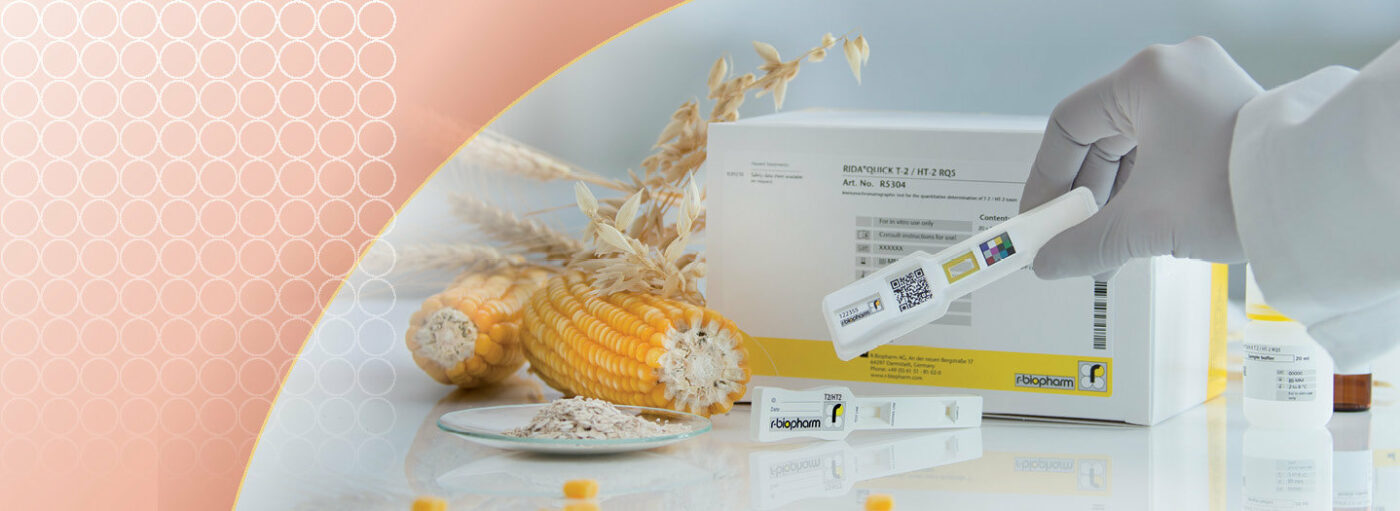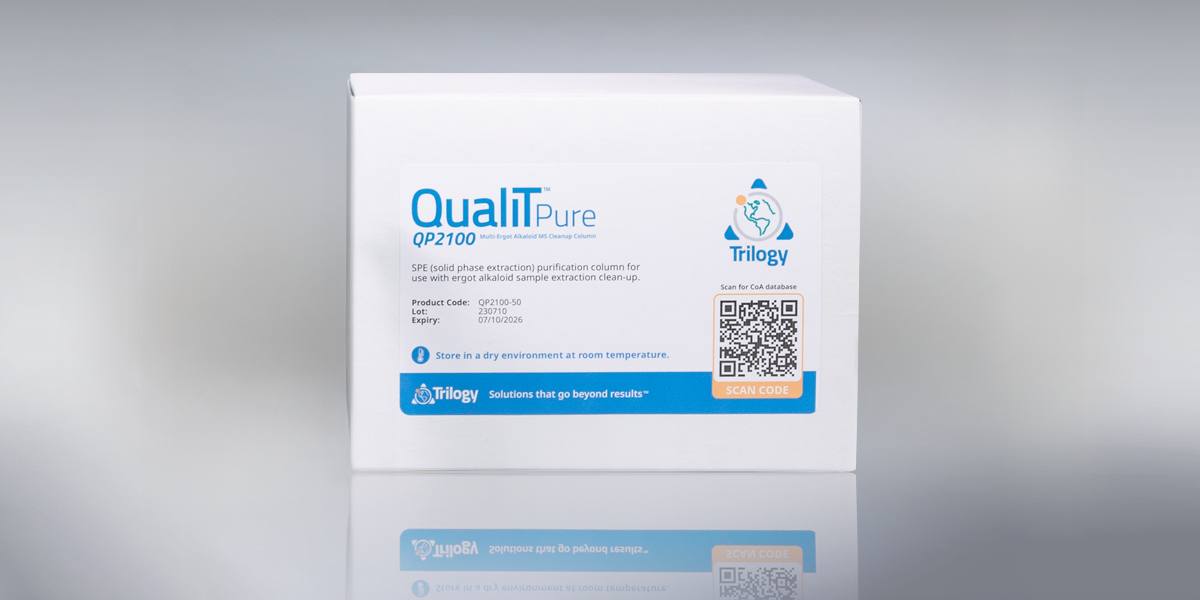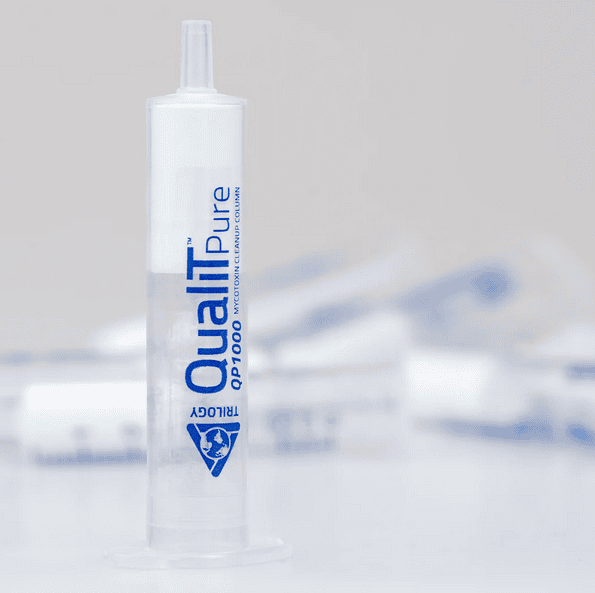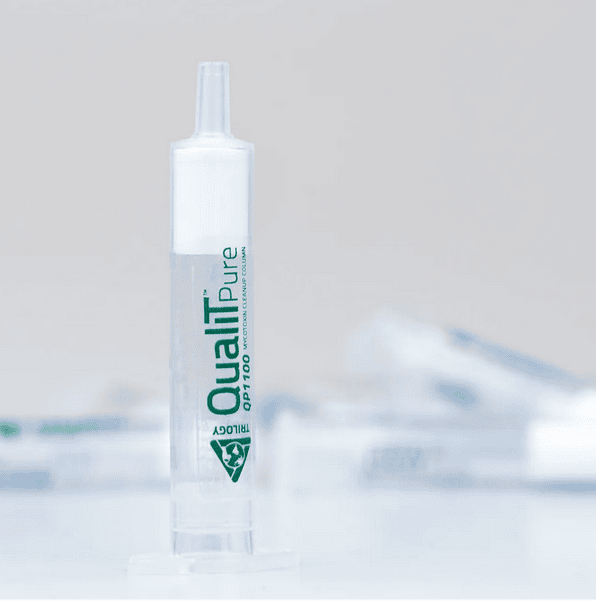
Recent news in Food & Feed Analysis
- Home
- /
- T-2 and HT-2 toxin:...
T-2 and HT-2 toxin: A threat to the grain harvest?

Grain harvest is well under way. This brings mycotoxins such as aflatoxin and ochratoxin into the focus again. However, also the less known mycotoxins T-2 and HT-2 toxin are a threat to harvest. This year, contamination could be particularly high.
T-2 and HT-2 toxins belong to the trichothecene group and are formed by fungi of the species Fusarium. They are often found in cereals such as oat, corn, wheat, barley, rice and rye. Infestation will not only result in lower crop yields, but may also have health consequences. Feeding livestock with contaminated grain may cause serious diseases, affect the growth and increase susceptibility to infection. Eggs and milk of these animals may also be contaminated with mycotoxins, presenting a risk to human health. Compared to other trichothecenes, T-2 and HT-2 toxins have a particularly high toxicological potential. Due to the strong cytotoxic, carcinogenic and immunosuppressive effect, a combined TDI value (tolerable daily intake) for T-2 and HT-2 toxin of 100 ng/kg body weight was defined by EFSA. To date, no legal maximum value for T-2 and HT-2 toxin has been defined in the EU.
T-2 / HT-2 toxin contamination of 2017 harvest
T-2 and HT-2 toxin primarly form at high humidity in moderate climatic zones (12 – 19 °C). This year, the risk of infestation with T-2 / HT-2 toxin is high in many areas since increased rainfall and flooding were beneficial for the formation of mold fungi. Incidence and concentrations however show a broad regional variation. Trilogy Analytical Laboratories has examined the current mycotoxin situation in the USA more closely: T-2 and HT-2 Toxin Damage in 2017 Wheat
Detection of T-2 / HT-2 toxin
In order to prevent cross-contamination, to minimize losses and to protect humans and animals from harmful toxins, it is important to detect a potential infestation at an early stage. For the analysis of T-2 / HT-2 toxin, the Regulation (EU) No. 401/2006 does not prescribe a specific method. As long as the method meets specific performance criteria (regarding detection limit, recovery rate, etc.), laboratories can freely choose from the available analysis techniques:[vc_tabs style=”simple”][vc_tab title=”HPLC, LC-MS/MS, GC” tab_id=”1564386891-1-54″]These relatively costly chromatographic methods require a sample clean-up with immuno-affinity columns or solid phase extraction columns prior to analysis. From our portfolio:
- EASI-EXTRACT® T-2 & HT-2
- Trichothecene P Column
- PuriTox Trichothecene
- PuriTox Total Myco-MS
[/vc_tab][vc_tab title=”ELISA” tab_id=”1564386891-2-11″]This antibody-based method enables efficient quantitative analysis also of a large number of samples. A microtiter plate photometer is required for evaluation. From our portfolio:
[/vc_tab][vc_tab title=”LFD” tab_id=”1564386975768-2-0″]Lateral flow test strips enable rapid on-site analysis. Quantitative evaluation can be done with a LFD reader or the convenient smartphone application RIDA®SMART APP. From our portfolio:
- RIDA®QUICK T-2 / HT-2 RQS
- RIDA®QUICK SCAN
- RIDA®SMART APP
[/vc_tab][/vc_tabs]



